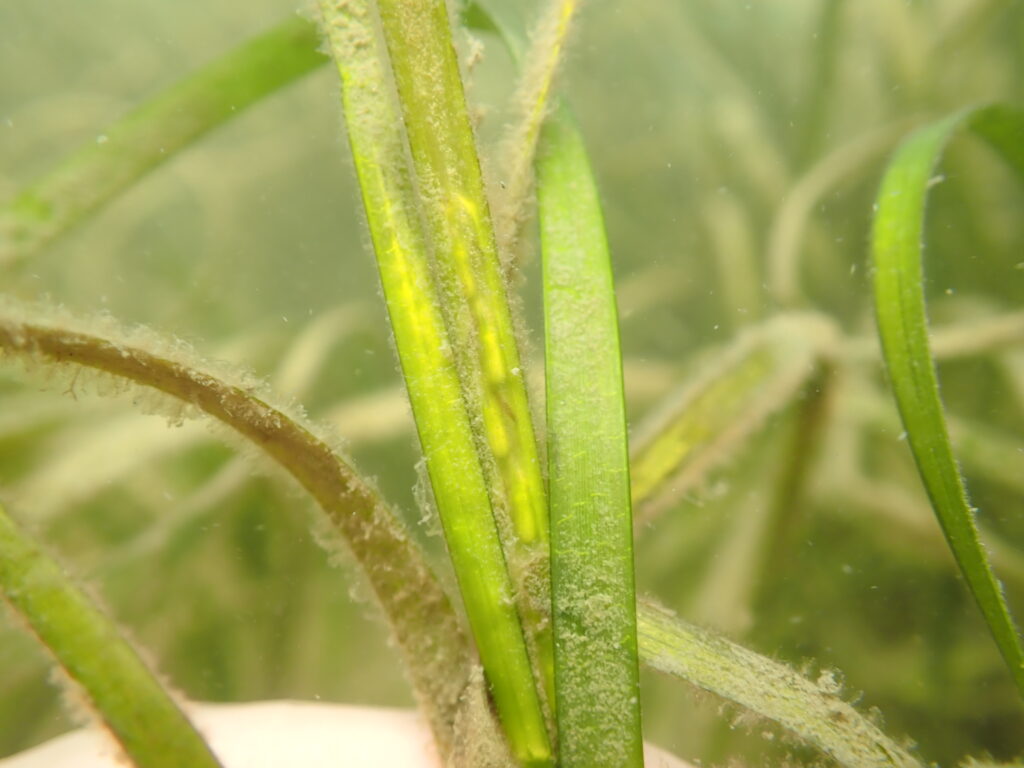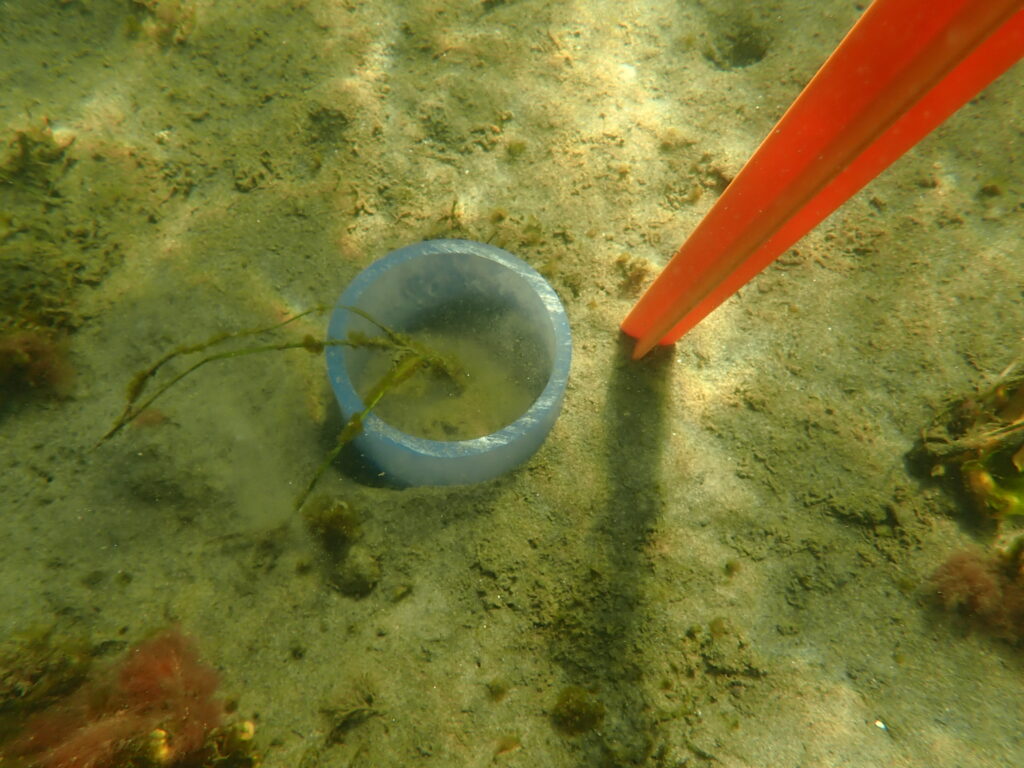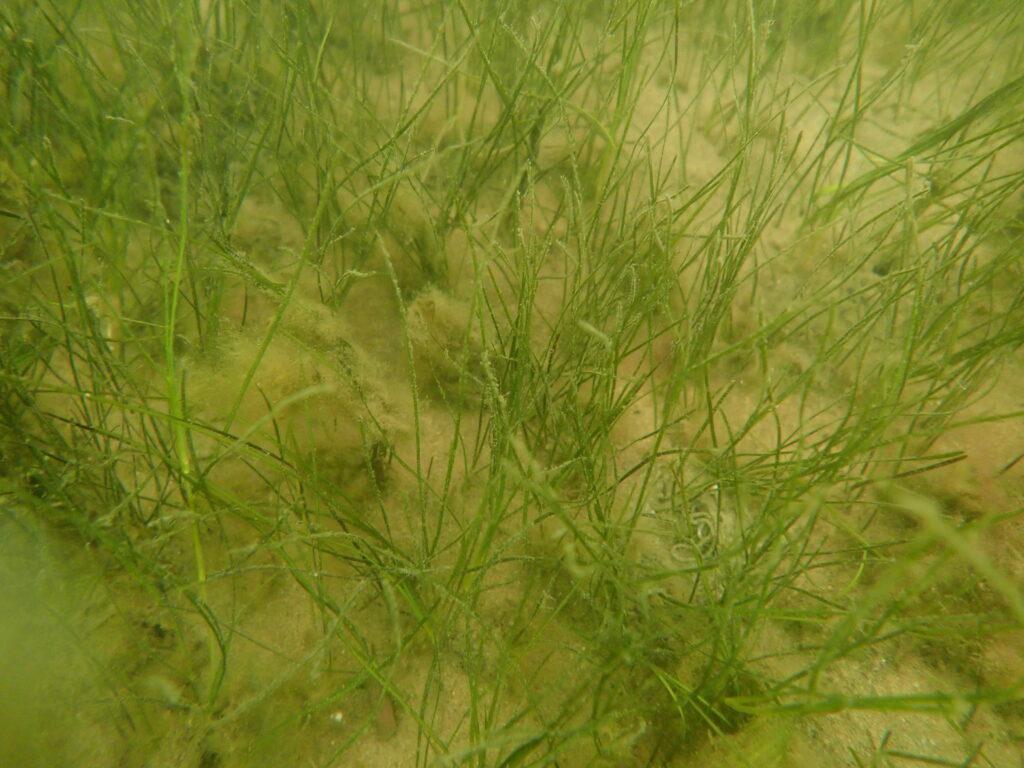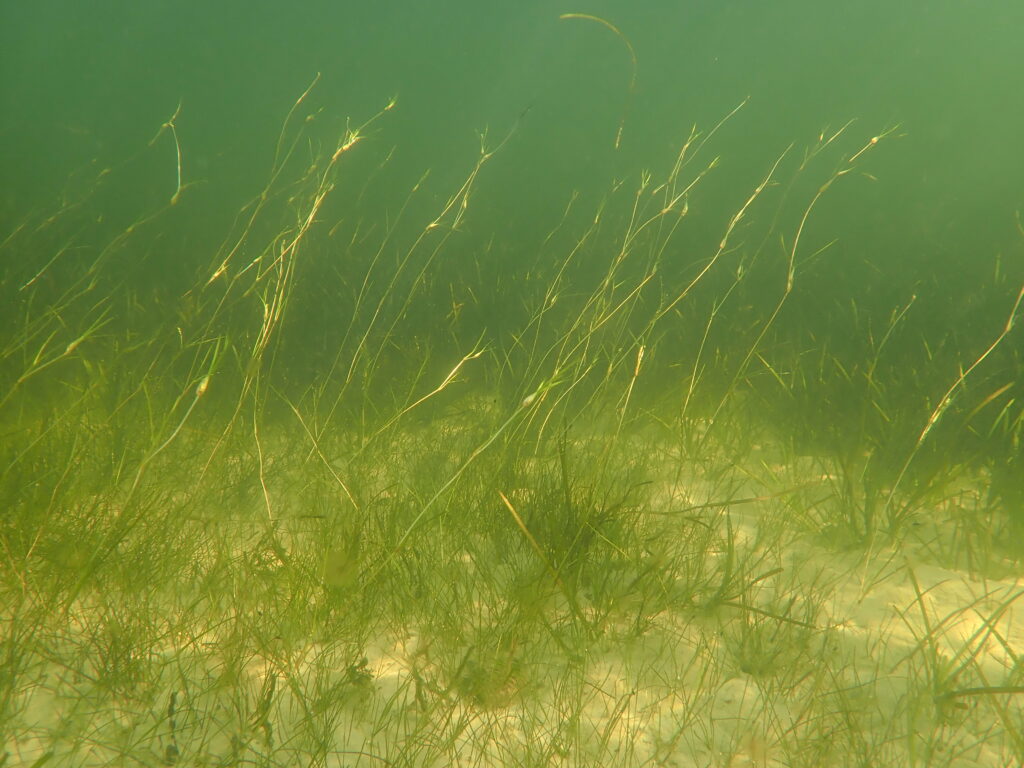
NJ Has Seagrass?
We sure do! While spread throughout much of our coastal environment, about 80% of all of New Jersey’s seagrass habitat occurs in Barnegat Bay.
Seagrass is a type of marine submerged aquatic vegetation (SAV), which are rooted plants that grow completely underwater, except for periods of brief exposure at low tides. Seagrasses are different than seaweeds because they have a vascular system which works to transport nutrients between the sediment, roots, and leaves. Most conservation efforts focus on two species, eelgrass (Zostera marina) and widgeon grass (Ruppia maritima). Other regulated species include horned pondweed (Zannichellia palustris) and sago pondweed (Potamogeton pectinatus). A full list of regulated species can be found within the Coastal Zone Management Rules .
Seagrass, a Key Player
Seagrasses are important as they serve as the base of the food web, providing food and nursery habitat to many commercially and recreationally important species, like shellfish and finfish. They are also a sensitive indicator of water quality and can be used to determine the overall health of an ecosystem.
Moreover, seagrasses are able to sequester (store) carbon dioxide from the atmosphere, and limit ocean acidification. By storing carbon in their roots, and in the sediment, they are able to store more carbon than a terrestrial forest!
Eelgrass (Zostera marina)
Eelgrass is one of the most widely distributed seagrass species in the world. It has a thick rhizome (stem) and ribbon-like leaves with rounded tips, growing about 1 m long and 2-12 mm wide. Eelgrass meadows can contain both small and narrow leaves or longer, wider leaves, depending on factors such as sediment type and water depth. Eelgrass is known to tolerate a salinity range of approximately 18-25 parts per thousand, but has been found in waters of greater salinity.
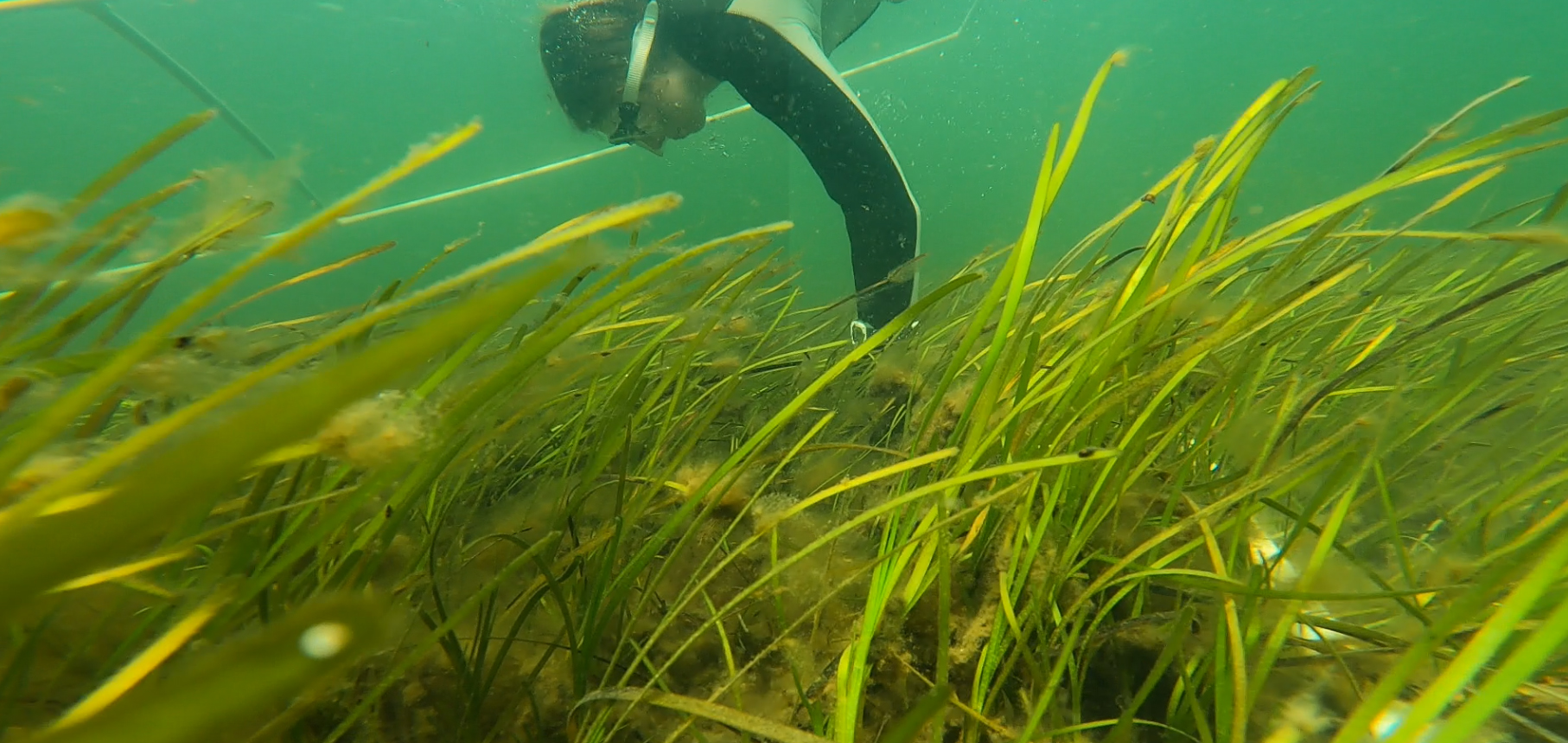
Widgeon grass (Ruppia maritima)
Widgeon grass is less commonly found than eelgrass throughout the state, though it can be observed in mixed meadows with eelgrass. It has linear, thread-like leaves that are 3-10 cm long and about 0.5 mm wide. It can be found growing in very small, short meadows or patches. Like eelgrass, widgeon grass reproduces both asexually and sexually and consists of a flower head with two flowers containing male and female reproductive organs. Widgeon grass is known to have a broader salinity tolerance than eelgrass, ranging from about 5-18 ppt.
Threats
Several threats have caused a loss of seagrass meadows within the state. Direct impacts, like contact from boat propellers and strong boat wakes, can damage or scour meadows. Indirect impacts from waterfront development, construction, and algal blooms can reduce water clarity, blocking sunlight needed by seagrasses for photosynthesis. Other threats include storms, floods, disease, and poor water quality, making conservation efforts vital to maintaining the ecosystem services this habitat provides.
Program Overview
In 1979, the need for monitoring the distribution of seagrasses in NJ back bays was expressed by the NJDEP Fish & Wildlife. The New Jersey Submerged Aquatic Vegetation Atlas was conducted by Earth Satellite Corporation under contract to the NJDEP.
In support of this state wide effort, the NJDEP Fish & Wildlife’s Bureau of Marine Habitat and Shellfisheries began documenting and mapping seagrasses collected during its Estuarine Shellfish Inventory surveys. This data, in addition to the 1979 data, is publicly available and used for regulatory purposes.
In 2003 and 2009, a study conducted by Rutgers University measured the extent of seagrass habitat across the Barnegat Bay-Little Egg Harbor estuary system. This was one of the last seagrass surveys until recent expanded and enhanced efforts in 2023.
To help protect this important marine habitat, the Seagrass Conservation Program aims to conduct routine mapping of seagrass meadows throughout the state, collaborate on current and future monitoring efforts to assess the health and status of NJ meadows, and identify areas for potential seagrass restoration efforts.
The Program encompasses three tiers: (Tier 1) Mapping, (Tier 2) Monitoring, and (Tier 3) Restoration and Enhancement. Through outreach initiatives, the Program aims to inform NJ residents about the importance of seagrass habitats in coastal systems and what they can do to help conservation efforts.
Mapping Seagrasses in the Barnegat Bay & Little Egg Harbor
In 2023, the Marine Resources Administration (MRA), Rutgers Center for Remote Sensing and Spatial Analysis (CRSSA), and Stockton University partnered on a project to map seagrass habitat throughout the Barnegat Bay to Little Egg Harbor estuary. This was an aerial-based mapping survey, a traditional method used for mapping seagrass habitat. In collaboration with Stockton University, MRA staff was responsible for collecting field verification data to “train” the aerial imagery collected.
Mapping Seagrasses in the Barnegat Bay & Little Egg Harbor Estuary System
In 2023, the Marine Resources Administration (MRA), Rutgers Center for Remote Sensing and Spatial Analysis (CRSSA), and Stockton University partnered on a project to map seagrass habitat throughout the Barnegat Bay-Little Egg Harbor estuary system. This was an aerial-based mapping survey, a traditional method used for mapping seagrass habitat. In collaboration with Stockton, MRA staff was responsible for collecting field verification data to “train” the aerial imagery collected.
A video highlighting the 2023 survey can be found below.
Featured Video
Exploring Underwater Wonders: Submerged Aquatic Vegetation (SAV)
September 26, 2023
Did you know that beneath the surface of New Jersey’s coastal waters lies a hidden world of rooted, vascular plants that play a crucial role in our ecosystem? Submerged aquatic vegetation (SAV) refers to these plants that grow completely underwater, except for periods of brief exposure at low tides. In New Jersey, the two dominant species are eelgrass (Zostera marina) and widgeon grass (Ruppia maritima)…. (Learn More)
 Official Site of The State of New Jersey
Official Site of The State of New Jersey

